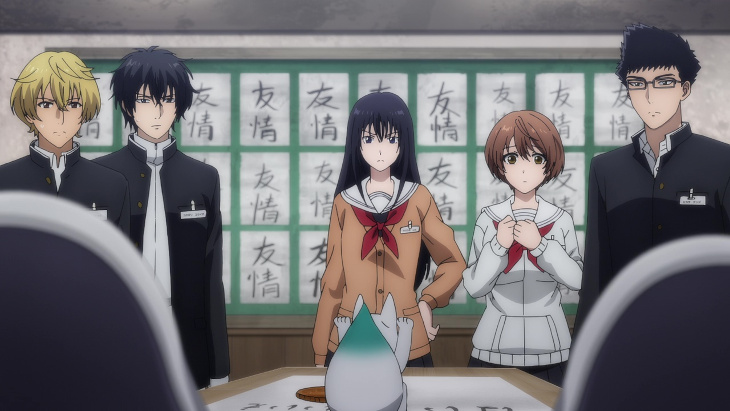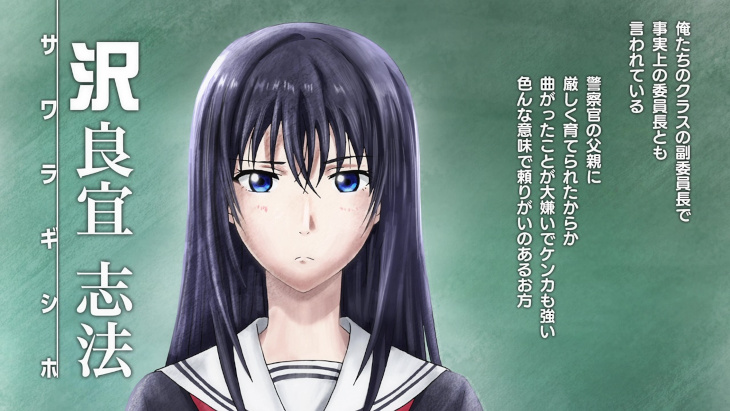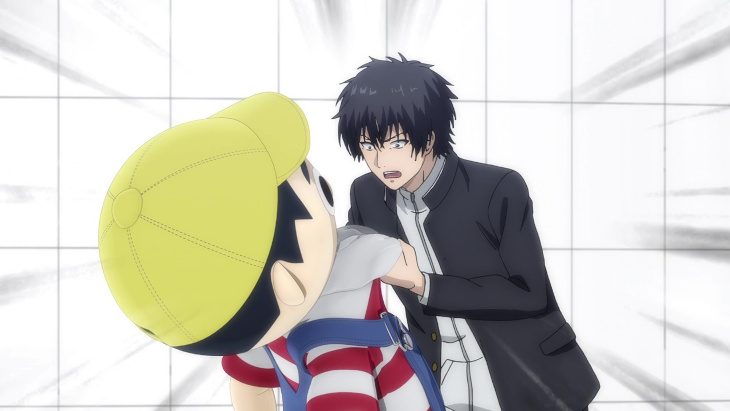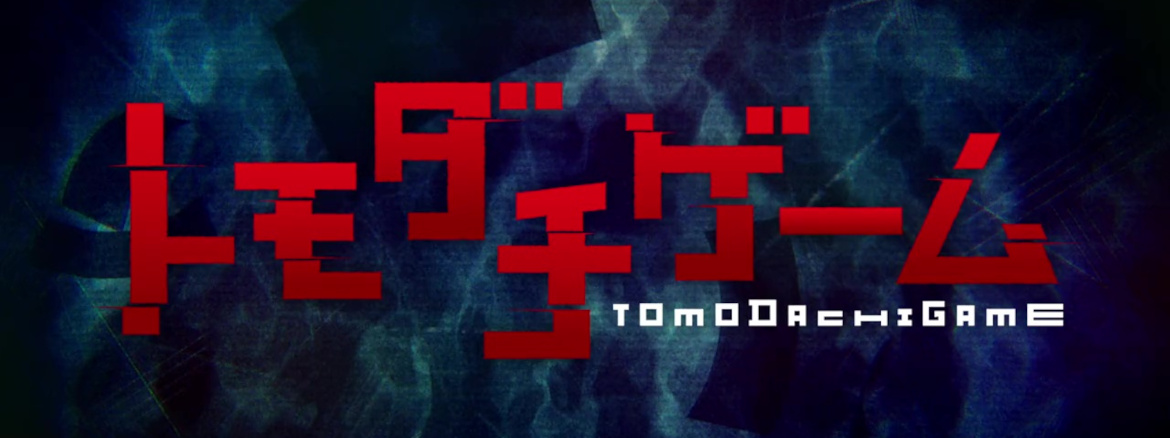
“So, Yuuichi-kun, which one’s untrustworthy trash? Or is it that you care more about money than your friends?”
Tomodachi Game possesses a strange concept for a series that part of me wants to like, but it suffers from a significantly flawed execution that holds it back. I am thankful that the show does not appear to be a death game scenario like I initially suspected it would be and is focused on a more psychological thriller aspect than its unnerving mascot might imply. I can’t deny that a strong part of me didn’t even want to write this review due to the mind games nature of the plot combined with the uneven presentation. These types of episodes are a pain to unravel and catalog due to conflicting agendas within the writing, so they’re arguably among the most frustrating to review. Suffice it to say that, despite some good underlying concepts, Tomodachi Game is hampered by the same tools the narrative uses to function and its attempts to compensate for a frenetic plot progression do more harm than good.

The show follows Katagiri Yuuichi, a poor high school student who worked part time to save money for his class’ school trip, because he’d promised his friends they would all go on the trip together. However, when the class funds are mysteriously stolen, things start to go off the rails as Katagiri and his 4 friends are abducted and told they will be taking part in a game where a 20 million yen debt that had been accumulated by one of the 5 will be distributed among the rest, and they will participate in games with the goal being to reduce their debt to 0. This is an interesting setup, but one that would require a decent amount of time to establish our characters, their motivations, and the rules of the game itself. Unfortunately, all this setup is completed well before the halfway point. In fact, the show is in such a rush to introduce its characters that it not only throws up info that lists their names, but character backgrounds and personality information. These cards contain a ridiculous amount of info for the viewer to look over, and they only remain on screen for about 3 seconds apiece. This appears to be an awkward balancing of priorities. The show wants to get into psychological battles as quickly as possible, but needs to establish its characters. However, if it spends too much time exploring the characters, the viewer might draw conclusions or gain insight based on the character dynamics or guess which direction things are going in. Here, we have a bizarre half-measure. The characters have personalities that we’re told about, but we don’t encounter those personalities first hand until after they’re already thrust into the competition thus keeping them, for all intents and purposes, as blank slates. The key factor, though, is almost certainly to get our leads into the game as quickly as possible, regardless of the expense to the show’s pace or viewer engagement. The game that occurs in this episode is conceptually interesting enough, but it continues to be undermined by the issues I just mentioned. There are too many rules that the viewer needs to keep track of, too many characters who remain unexplored, and the mad rush to get through as much plot as possible all serve to handicap what could be an interesting examination of how a skewing of perspective can alter a relationship.

I wasn’t aware ahead of time, but there have been a string of adaptations of this series, with a previous TV adaptation and two movies. This is its first anime iteration though, and it was handed off to Okuruto Noboru which… is a choice. Up until this point, Okuruto Noboru was probably best known for The Hidden Dungeon Only I Can Enter from last year, a title that I didn’t hear particularly good things about. The studio is less than 5 years old, and the lack of experience shows both in this show’s poor time management and inconsistent visuals. I don’t know why they decided to use CG to animate the mascot, Manabu-kun, who leads the Tomodachi Game, but it is a choice which undermines any scene he’s in. He does not look at home interacting with the other characters, and while it may slightly accent his unsettling qualities, it mostly just serves as a distraction. I will say that the OP is rather nice. It’s a bit reminiscent of the openings of the Danganronpa games, albeit with a little more animation and less stellar music.
Before I wrap up, a few Notes and Nitpicks:
- We get some hint of either a grand machination or some darker side to our protagonist at the very end (Possibly both), but that’s the problem with throwing a crowd of blank slates at the audience. It doesn’t matter if they’re not what they appeared to be, because they didn’t appear to be anything.
- Technically, I did watch a show that Okuruto Noboru worked on, as I did review the first episode of The Girl in Twilight. However, that tells me nothing about the studio’s work for two reasons. First is the fact that I can’t remember anything about that episode whatsoever. The second is that they only produced episodes 8-13 of the show. They also produced the sequel to How Not To Summon a Demon Lord, but I have better things to do with my time, like twiddling my thumbs or self-flagellation.
- I really do like the idea of a more psychological game where the consequences are things like debt and the loss of friendships, but you can’t have that without taking the time to lay the necessary foundation. I wonder if this is also an issue in the manga, or if this is a case of a weak adaptation undermining the strengths of its source material. I could easily envision either situation.




Add comment